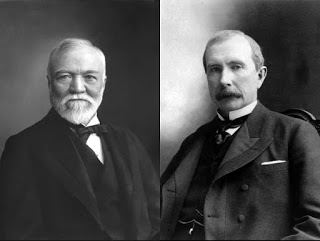
Many observers conclude OPEC is dead. Oh, its demise has been claimed before, but after the oil cartel failed to provide a quota (output goal) in last week’s statement, the claim has been given new life.
The problem is that OPEC’s action under Saudi leadership may be perfectly rational for a cartel. Suppose you were playing Machiavelli to a Saudi Prince.What would you advise? The Prince is concerned that many OPEC and non-OPEC producers increased their output and expected the Prince to bear the burden and cut output.The loss of control of the oil market costs money, prestige, and if allowed to persist, would challenge the lifestyle and strategic role of the kingdom.
Perhaps, it would be useful to begin by looking at the strategy of other cartels, like J.D. Rockefeller or Andrew Carnegie. You would find that they would drive the price of oil or steel down to squeeze out inefficient producers, and often scoop up their assets on the cheap. After regaining control of the market, they would be able to raise prices again, and earn what economists call “monopoly rents.”
Saudi Arabia is insisting on similar tactics. Many OPEC countries have had to go along with Saudi Arabia because they smaller producers. Many observers seem confused. They see the lower price of oil as a failure of the Saudi strategy. It signals, some say, the end of OPEC. What they miss is that through a decline in prices the cartel seeks to re-establish its control.The drop in oil prices will reduce some supply. Non-OPEC output is expected to fall next year.It likely would not have if Saudi Arabia continued its previous strategy of acting as a swing producer.
How does one tell the difference between someone winking, someone with a twitch, and someone mimicking someone winking or twitching? The acts look alike, but the context and social meaning are quite distinct. The action of a cartel trying to discipline the market and a collapsed cartel may look eerily similar from a high level of abstraction, but they are as different as a surgeon cutting a patient in a surgical procedure and a stabbing.













Leave A Comment